1958: The School of Forestry

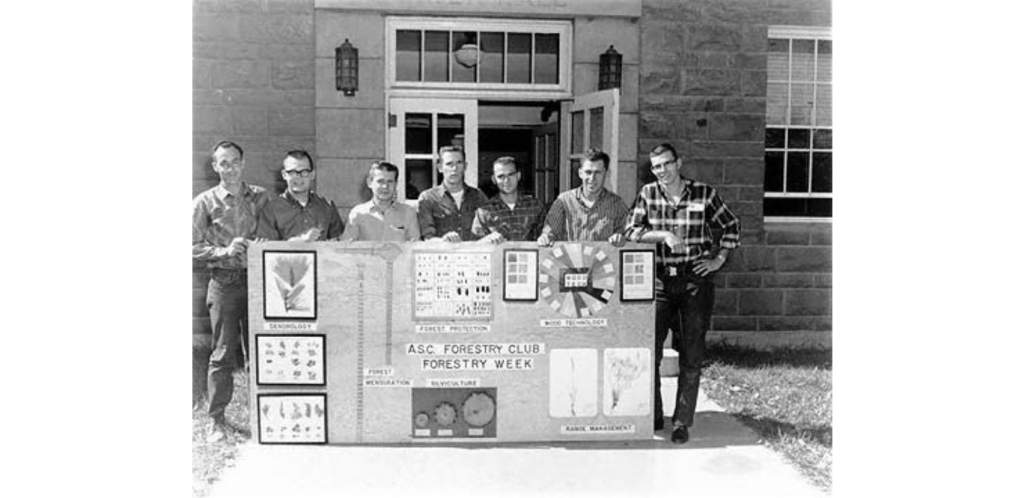
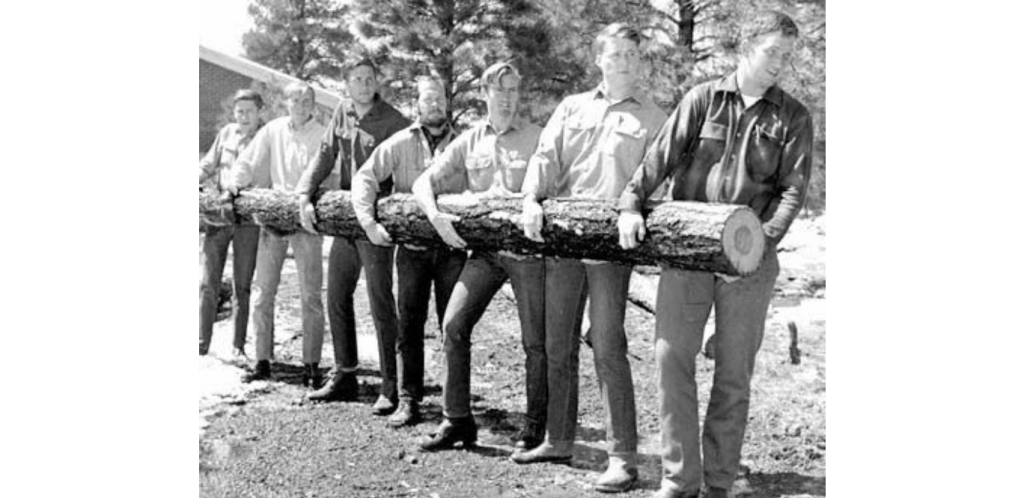
The first professional, four-year degree program in Forestry was founded at Cornell University in New York in 1898, prompting the establishment of Forestry programs at universities across the United States. Most programs specialized in the study of their local ecosystems.
Lawrence Walkup, the president of Arizona State College (ASC, now NAU) from 1957 until 1979, took on the project of founding the School of Forestry in the late 1950s.
In support of establishing a School of Forestry at ASC, the Southwestern Division of the Society of American Foresters (SAF) determined that the program would be beneficial for multiple reasons. Flagstaff’s location within the world’s largest contiguous ponderosa pine forest made ASC the ideal location to study forestry. An academic forestry program in Flagstaff would confront the overall shortage of professional foresters in the United States and the lack of forestry facilities and educational opportunities in the Southwest. In addition, the Arizona Cattle Growers Association demanded more local employees qualified in public land administration and well-versed in local ecological patterns.
ASC and the SAF provided the Arizona Board of Regents with their petitions. The following year, 1958, Arizona State College opened its School of Forestry, enrolling 50 students total.

In 1958, ASC was the only university in the Arizona-New Mexico region offering a four-year degree program in forestry. The program was designed to prepare incoming students in “forestry, land and timber management, timber utilization, forest protection, wood products industries, science, commerce, and teaching,” according to the September 1958 issue of the Lumberjack student publication.
——
Forestry Department Members in the Field. Circa 1954-1968. Northern Arizona University Photographs. NAU.PH.1960s.5.02.
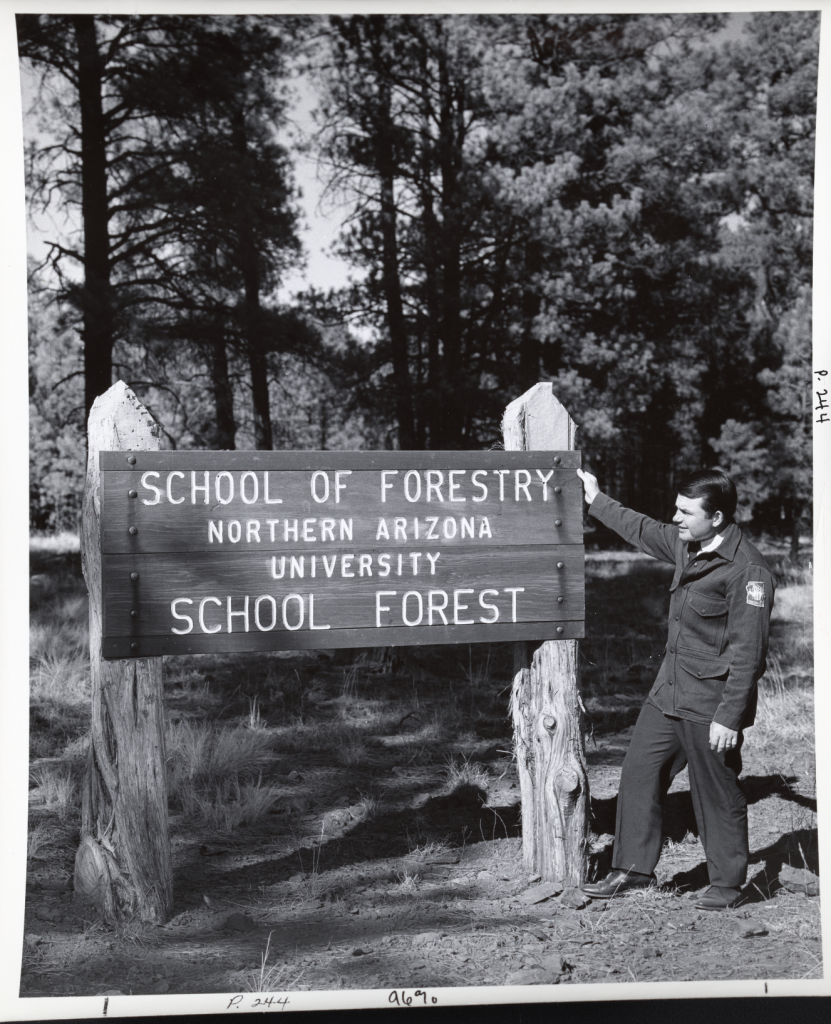
The Rocky Mountain Research Station (formerly Fort Valley Experiment Station) effectively carried on G.A. Pearson’s legacy by partnering with the ASC School of Forestry. From the program’s beginnings, the Rocky Mountain Research Station offered student fieldwork and lab experiences, professional development opportunities, and aided the development of the program’s first curriculum. Much of the program’s studies were based on G.A. Pearson’s findings on ponderosa pine ecology at the Fort Valley Experiment Station.
——
School of Forestry, Northern Arizona University, School Forest Sign. 1954-1968. Northern Arizona University Photographs collection. NAU.PH.1960s.5.06.



Northern Arizona University Photographs Collection. NAU.PH.1960s.5.04.


Northern Arizona University Photographs Collection. NAU.PH.1960s.5.08.
The Forestry Club predates the School of Forestry itself. ASC founded its Forestry Club in 1950 as a training program for firefighters and an informal opportunity to gain knowledge in local forest operations and silviculture. The club operated in collaboration with the Forest Service, providing them a list of student club members to serve as on-call wildland firefighters throughout the year.
In addition, Forestry Club was the designated muscle of ASC, waiting on standby for heavy-lifting projects that any campus facility may have needed. Its members facilitated campus fire drills, aided in construction projects, chopped and sold firewood, and managed the greenery around campus to prevent fires.
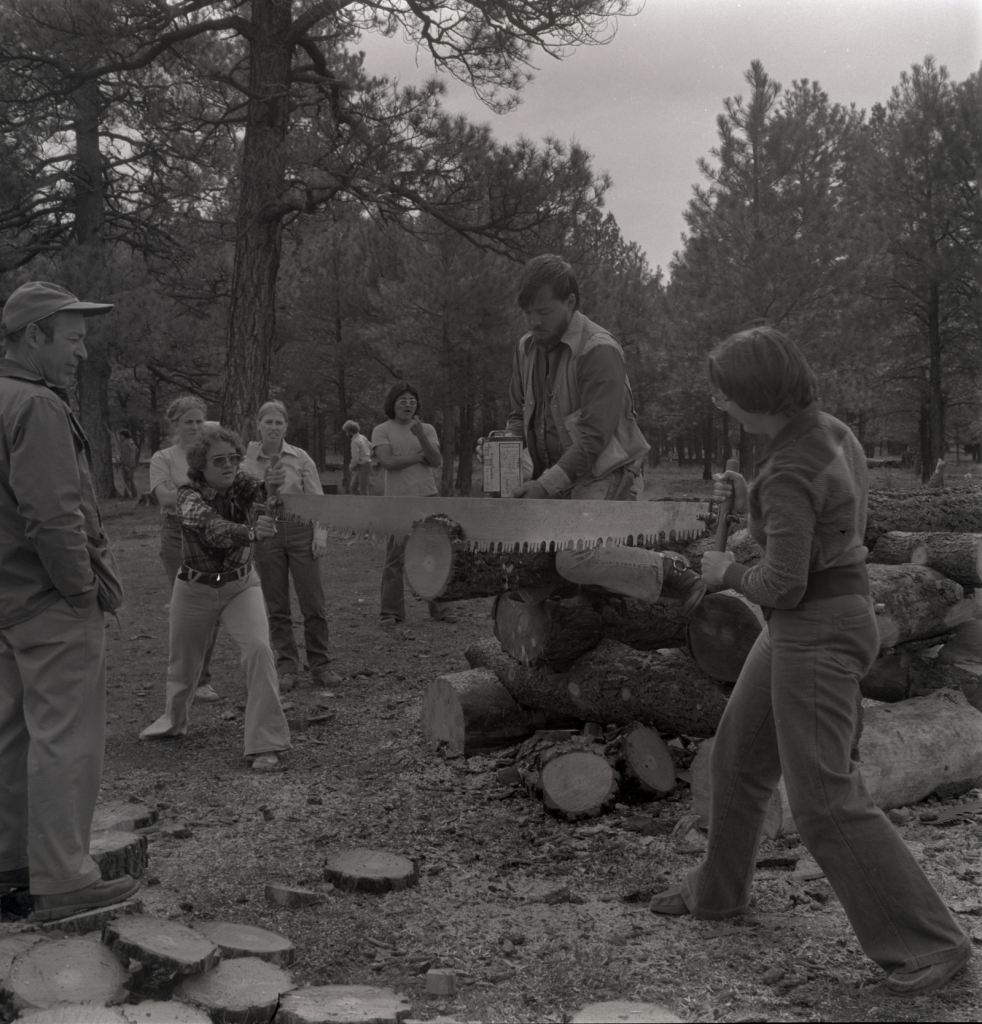

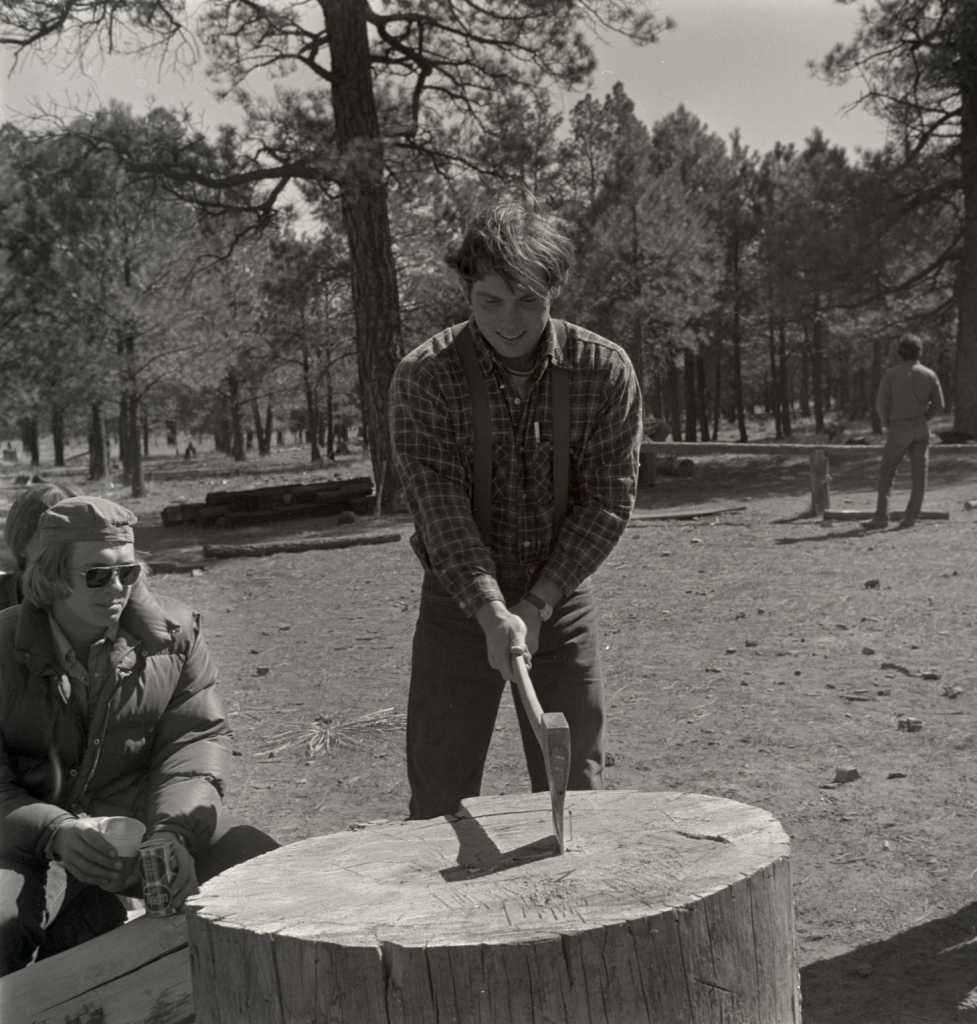
Following the School of Forestry’s founding in 1958, the Forestry Club became more involved in promoting public forestry knowledge. Their most popular event, Forestry Week, took place each fall semester and included student and faculty-led activities and presentations regarding ponderosa pine ecology.
Perhaps Forestry Week’s most engaging event consisted of a public demonstration of competitive logging events, otherwise known as a logging sports competition. These events were reminiscent of traditional logging operations that an AL&T Company logger would have used to cut down timber in the woods surrounding Flagstaff. ASC forestry students competed in high-energy races to cut logs using crosscut saws and axes in the shortest amount of time. The winner with the most points took the title “Bull O’ the Woods.” All the while, the ASC community engaged in entertaining and educational opportunities to appreciate, connect, and learn about their local environment.

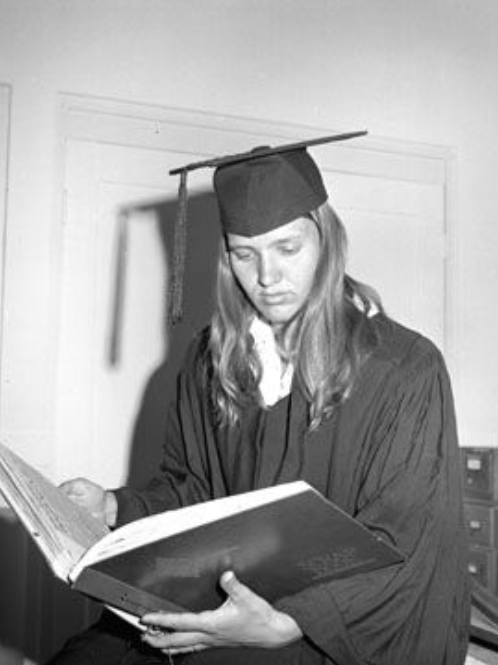
NAU.ARC.1971-16-27.
The Dean of the School of Forestry at the time announced that “as long as he was dean, there would be no women in forestry graduating from NAU,” said Billingsley. Despite the social challenges, Billingsley steadily pursued her degree, affirming that her love of forestry far outweighed the criticism of her peers and professors. She said, “I found that I really liked [forestry], so I stayed.”
Sue Billingsley (née Varin) was the first woman to graduate from the NAU School of Forestry in 1971. She began her degree in 1966 and worked for the Forest Service on and off for four years during her undergraduate years.
As the first and only woman enrolled in the NAU Forestry program, Billingsley recalled feeling looked down upon by her male classmates and professors throughout her studies. She understood that her male peers enjoyed the exclusively masculine nature of the program and wanted to keep it that way. “It was just women breaking into a man’s career,” she said in an interview.

NAU.ARC..1969.4.19.